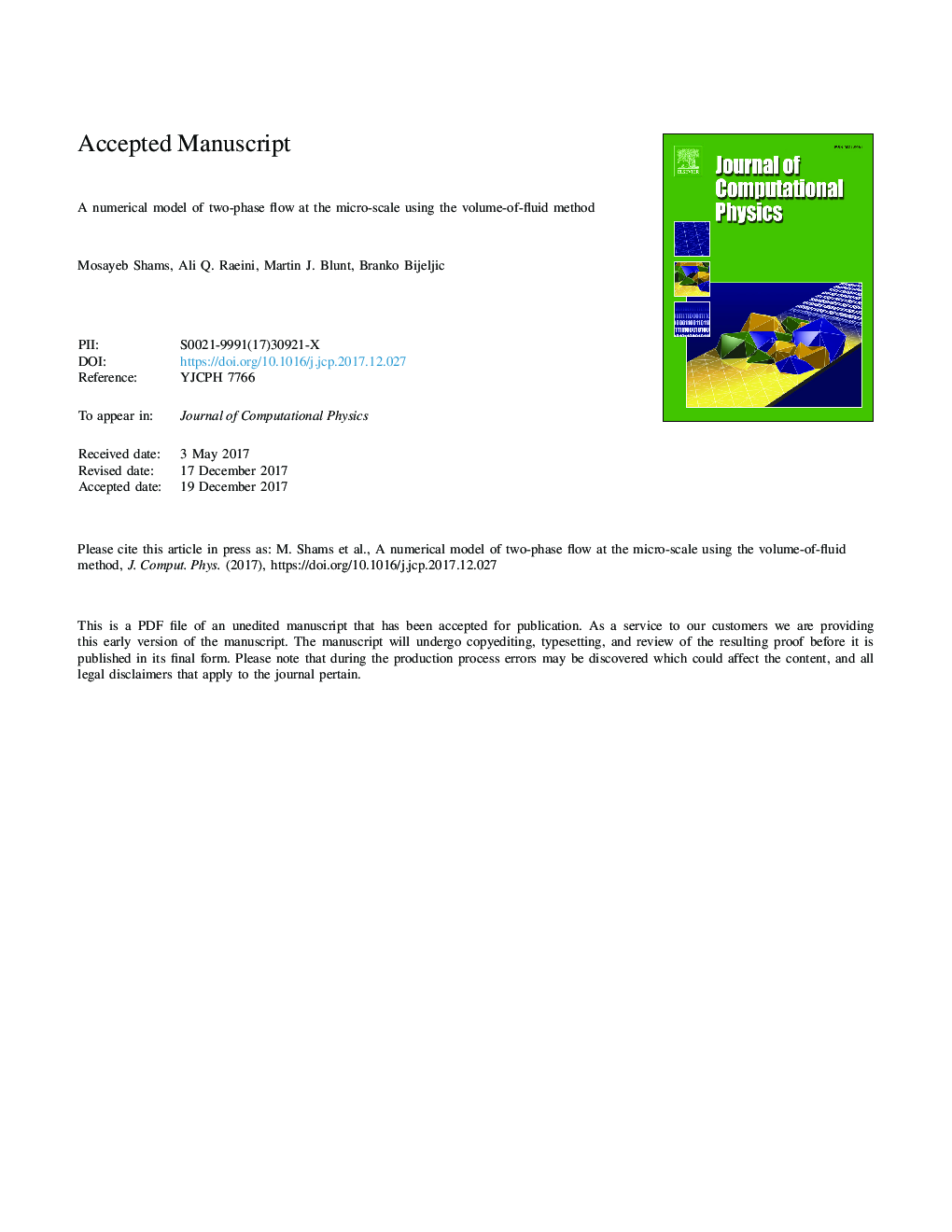| Article ID | Journal | Published Year | Pages | File Type |
|---|---|---|---|---|
| 6929124 | Journal of Computational Physics | 2018 | 38 Pages |
Abstract
This study presents a simple and robust numerical scheme to model two-phase flow in porous media where capillary forces dominate over viscous effects. The volume-of-fluid method is employed to capture the fluid-fluid interface whose dynamics is explicitly described based on a finite volume discretization of the Navier-Stokes equations. Interfacial forces are calculated directly on reconstructed interface elements such that the total curvature is preserved. The computed interfacial forces are explicitly added to the Navier-Stokes equations using a sharp formulation which effectively eliminates spurious currents. The stability and accuracy of the implemented scheme is validated on several two- and three-dimensional test cases, which indicate the capability of the method to model two-phase flow processes at the micro-scale. In particular we show how the co-current flow of two viscous fluids leads to greatly enhanced flow conductance for the wetting phase in corners of the pore space, compared to a case where the non-wetting phase is an inviscid gas.
Related Topics
Physical Sciences and Engineering
Computer Science
Computer Science Applications
Authors
Mosayeb Shams, Ali Q. Raeini, Martin J. Blunt, Branko Bijeljic,
